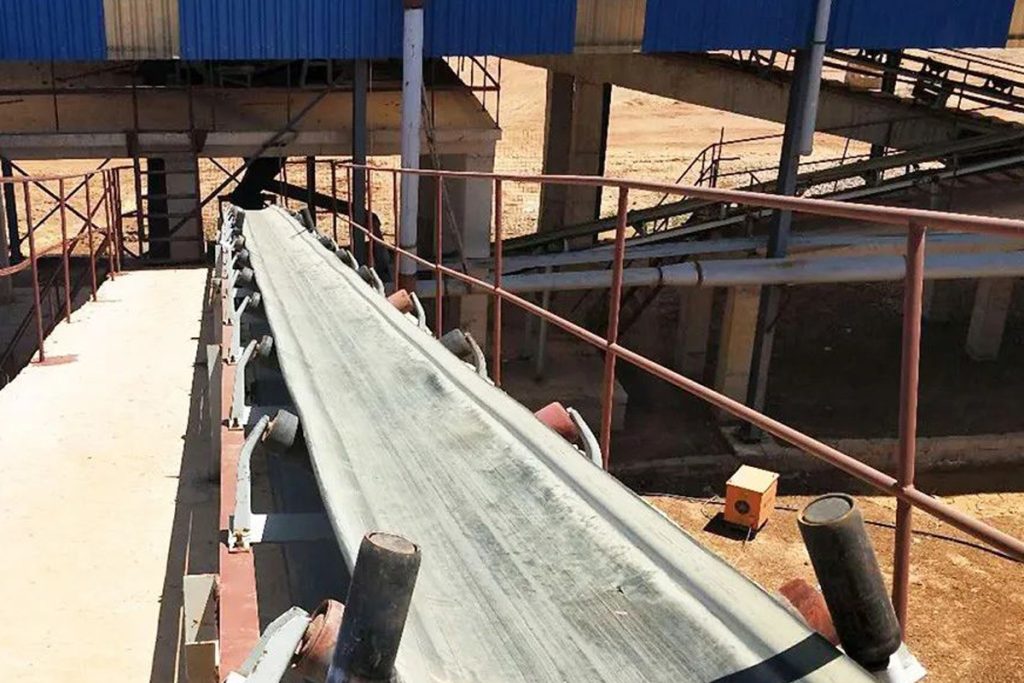In the realm of conveyor systems, objects to be conveyed can be broadly categorized as either box objects or bulk objects. Each category demands specific considerations when it comes to conveyor types and designs.
Defining Bulk Objects and Their Challenges:
- The Essence of Bulk Objects: Bulk objects are fragmented materials like sand, stones, and other granular substances. Their innate nature poses unique challenges for conveyor systems due to their tendency to spread out during transportation.
- The Dilemma of Flat Belts: Conveying bulk objects with flat belts can be intricate due to their propensity to scatter. However, belt conveyors designed for belt feeders often employ flat belts. To address the challenge of conveying loose materials, conveyor belts are crafted into a ship bottom shape. This ship bottom shape significantly enhances the efficacy of bulk object conveyance.
Crafting Ship Bottom Shape for Bulk Object Conveyance:
- Choice of Conveyor Belts: Bulk object conveyance primarily utilizes rubber conveyor belts. Some developments in resin belts capable of adopting a ship bottom shape are emerging. Although resin belts offer lightweight advantages, their durability is notably shorter than that of rubber belts due to the demands of forming the complex ship bottom shape.
- Methods to Hold and Guide the Belt: Conveyor belts can be held and guided using two main methods: a) Rollers: Conveyor belts can be guided and shaped into a ship bottom form using rollers. This approach provides longevity to the belt’s life, as wear and tear are reduced. b) Steel Plates: Alternatively, belts can be slid on steel plates bent into the ship bottom shape. This method, known as the steel plate guide, is an option but may result in greater wear on the belt over time.

Understanding Trough Angles and Ship Bottom Shape
- Trough Angle and Carrier Rollers: The ship bottom shape is characterized by trough angles. These angles are symmetric and equal. Carrier rollers, known as “carrier rollers” for the conveying side and “return rollers” for the returning side, play a pivotal role in shaping the ship bottom structure.
- Setting Trough Angles: Trough angles are set based on specific considerations, such as the material to be conveyed. They play a vital role in maintaining the integrity of the belt and preventing the conveyed objects from sliding off. Trough angles are often set at: a) 20 degrees: For objects with high specific gravity. b) 30 degrees: Commonly used for normal objects. c) 45 degrees: Suited for objects with low specific gravity.
- The Role of Trough Angles: Trough angles are pivotal in ensuring efficient bulk object conveyance. Their selection is guided by a balance between the bending stress on the belt and the prevention of objects falling off during transport.
Conclusion
Conveying bulk objects efficiently necessitates a deep understanding of ship bottom shape and trough angles. These factors are paramount in designing effective conveyor systems that successfully transport fragmented materials like sand, stones, and more.
By selecting the appropriate conveyor belt materials, utilizing carrier rollers effectively, and determining suitable trough angles, industries can establish robust conveyor systems tailored to the unique demands of bulk object conveyance.
